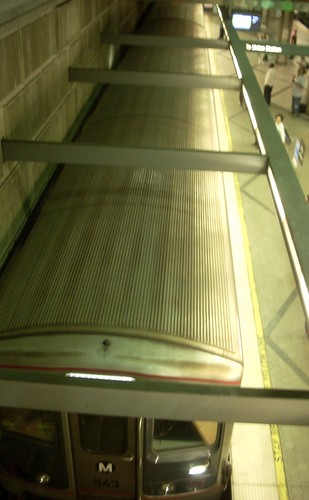Link: Streetcar Project for Downtown a Vision without Funding... Yet - LAist

Streetcar Project for Downtown a Vision without Funding... Yet
Photo by LA Wad via LAist Featured Photos on Flickr
Yesterday the nonprofit that has taken the lead to build a streetcar in downtown Los Angeles by 2014 held a public meeting to update the community on the latest developments and present the options they could take next. LA Wad at MetroRiderLA attended the meeting and heard some interesting facts:
The meeting was a “thinking out loud” session, as the hosts stressed that there is no funding sources, no operations plan or any official commitment from either the city or L.A. Streetcar Inc. to hold to the project timeline. Despite this seeming like a daydream, the streetcar workshop was professional in its presentation material, above right, and the knowledge of the project’s leaders.
A Broadway streetcar is estimated to cost $95 million to build, with $18 million included as a contingency. Annual operating costs are projected at $4 million to $6 million a year. Again, an operator has not been selected since Los Angeles Streetcar does not know if it would turn the project over to LADOT or Metro if it is completed. Schibuola indicated that Metro has the know-how and equipment to maintain rail cars and track, but of course Metro would also be expensive.
Three conceptual routes were released earlier this month and it seems most business owners are in support of this project as well as downtown councilmembers Jan Perry and Jose Huizar. The conceptual routes basically travel between L.A. Live and the Walt Disney Concert Hall via South Park and the Broadway/Hills corridors.
By Zach Behrens in News on July 30, 2009 11:45 AM





















